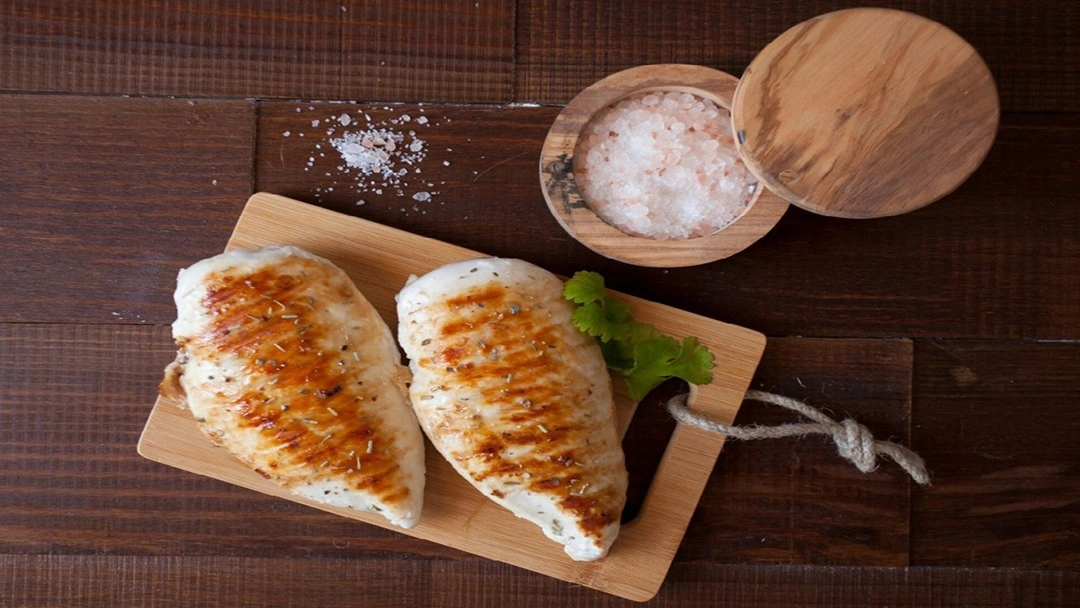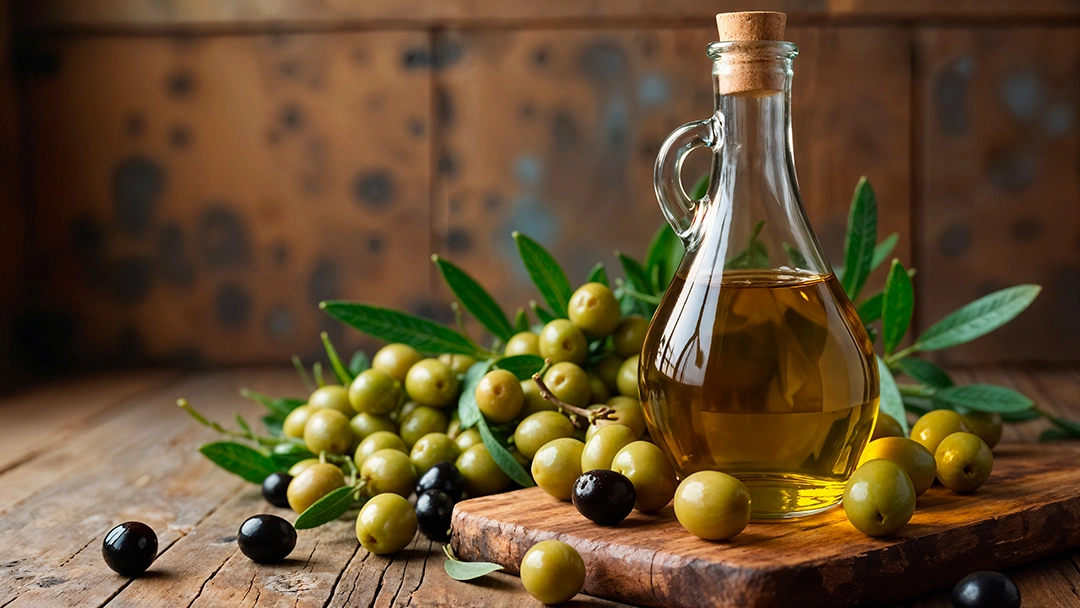Types of Oils Used in Oil Cleansing
Oil cleansing involves using different types of oils, each with unique properties for different skin needs.
These oils are categorized into three main types: base oils, nourishing oils, and astringent oils. Learning about these categories can help you choose the right combination for your skin type.
Base Oils
Base oils form the foundation of an oil cleanser. They’re lightweight and easily absorbed, which provides a gentle cleanse without clogging pores. Common base oils include:
- Jojoba Oil: Closely resembles the skin's natural sebum, making it ideal for balancing oil production and suitable for all skin types.
- Olive Oil: Rich in antioxidants and vitamins, it provides deep hydration and is particularly beneficial for dry or mature skin.
- Grapeseed Oil: A lighter option that helps tone the skin and is often recommended for oily or acne-prone skin.
Nourishing Oils
Nourishing oils are added to enhance the benefits of the base oil and provide additional hydration and nutrients to the skin.
These oils are rich in vitamins, fatty acids, and antioxidants that support skin health. Here are some of the examples of nourishing oils:
- Argan Oil: Packed with vitamin E and fatty acids, it’s known for its anti-aging properties and is great for dry or sensitive skin.
- Rosehip Oil: High in vitamins A and C, it helps with skin regeneration and is effective in reducing scars and hyperpigmentation.
- Avocado Oil: Rich in vitamins and essential fatty acids, it deeply moisturizes and is beneficial for dry, aging, or sensitive skin.
Learn More: Jordan Peterson’s Diet: What Is It and What Are Its Results?
[cta-meetings]
Astringent Oils
Astringent oils help to tighten the skin, reduce the appearance of pores, and control excess oil production.
These oils are particularly useful for oily or acne-prone skin. Common astringent oils include:
- Tea Tree Oil: Known for its antibacterial and anti-inflammatory properties, it helps fight acne and soothe irritated skin.
- Hazelnut Oil: A light, non-greasy oil that helps tighten skin and balance oil production.
- Lemon Oil: Offers a refreshing scent and helps brighten the skin while controlling excess oil.
Now that you know about different types of oil cleansing, it’s time to learn the fundamental tips about oils to choose the most suitable cleansing oil for your skin type.
Learn More: The Effects of Tallow for Skin: Is It Good? Benefits and Side Effects
How to Choose the Right Oil for Your Skin Type?
Selecting the right oil for your skin type is essential to ensure that your oil cleansing routine is effective and beneficial.
Different skin types have different needs, so choosing oils based on your skin’s characteristics can help you achieve the best results. Generally, there are three common skin types
which require specific kinds of cleansing oil.
[cta-meal-plan]
Face Oil for Dry Skin
If you have dry skin, you’re probably familiar with the tightness, flakiness, and itching that comes with it. The right face oil can make a big difference by providing the extra moisture your skin needs.
Oils rich in fatty acids, like argan, avocado, or marula oil, are great choices. These oils deeply moisturize and help maintain your skin's natural barrier, which keeps moisture in and irritants out.
Avocado oil, for example, is rich in oleic acid and antioxidants, making it excellent for soothing dry, irritated skin. It’s lightweight and effective, and it helps soften and smooth your skin, reduce fine lines, and provide much-needed hydration. Apply a few drops after cleansing to lock in moisture, or layer it over a rich moisturizer before bed for an extra luxurious experience.
Face Oil for Oily Skin
The right oils can help balance your skin’s oil production. Ingredients like squalane mimic your skin’s natural oils and signal to your oil glands that they don’t need to produce more.
It helps keep your skin balanced and less oily. Additionally, face oils support your skin’s moisture barrier, protecting it from environmental stress.
[cta-gocarnivore-plans]
Face Oil for Sensitive Skin
When you have sensitive skin, it can be intimidating to try new products, but gentle and non-irritating oils can be beneficial. Many oils are derived from seeds or are otherwise botanical, which means they tend to be rich in antioxidants.
Jojoba oil is a great option, as it’s unlikely to trigger breakouts and can help calm your skin. Oils like argan oil are also suitable for sensitive skin because they closely resemble your skin's natural oils and help balance and moisturize without irritating.
Choosing lighter, fast-absorbing oils with minimal, high-quality ingredients is important to avoid irritation and leave your skin feeling soft, not greasy.
After picking the right oil, follow the steps below to enjoy the benefits of oil cleansing at home.
Learn More: Does Tallow Cure Eczema? Tallow Soap and Balm for Eczema
How to Oil Cleanse at Home?
To use the benefits of oil cleansing, such as cleaning your skin and removing makeup, dirt, and excess oil, you can try the following steps at home.
- Apply the Oil: Start with a dry face. Pour a small amount of oil into your palm. Rub your hands together to warm the oil, then gently massage it onto your face using circular motions. Focus on areas where you wear makeup or where your skin tends to be oily.
- Massage Your Face: Spend a minute or two massaging the oil into your skin. This helps dissolve makeup, dirt, and impurities. The massage also stimulates circulation, which can improve your skin's appearance.
- Steam Your Face (Optional): For a deeper cleanse, you can steam your face. Soak a clean washcloth in warm water, bring it out, and place it over your face for about 30 seconds. This helps open your pores and allows the oil to penetrate more deeply.
- Wipe Away the Oil: Use a warm, damp washcloth to gently wipe the oil off your face. Rinse the cloth as needed and continue wiping until the oil and impurities are removed.
- Rinse (Optional): If you feel the need, you can rinse your face with lukewarm water to remove any remaining oil. However, some people prefer to leave a thin layer of oil on their skin for added moisture.
- Moisturize (Optional): After oil cleansing, you can apply your regular moisturizer if your skin feels dry. Alternatively, you can apply a small cleansing oil to your face as a light moisturizer.
[cta-meetings]
You can also make your own oil cleanser at home with simple ingredients, no matter what your skin type is.
Learn More: Carnivore Diet and Psoriasis [All You Need to Know]
DIY Oil Cleansing Recipes
Making cleansing oils at home allows you to use the ingredients that best suit your skin's specific needs. Here are some simple recipes for different skin types.
For Oily Skin
This blend is designed to balance oily skin by gently removing excess sebum while keeping your skin hydrated. Here’s how to make about 1.5 ounces of cleansing oil for oily skin, enough for 10-15 uses.
Ingredients
- 2 tbsp jojoba oil
- 1 tbsp grapeseed oil
- 2-3 drops tea tree oil (optional)
Instructions
- Mix the oils in a small bottle.
- Apply a few drops to your face and gently massage in circular motions.
- Use a warm washcloth to wipe away the oil.
[cta-meal-plan]
Customizing Tips
- For acne-prone skin, add a drop of lavender or rosemary oil for additional antibacterial properties.
- If your skin feels too oily afterward, reduce the amount of jojoba oil.
For Dry Skin
This rich blend is a great mix for dry skin as it helps lock in moisture and soothe any tightness or flakiness. Using the following ingredients, you can prepare about 1.5 ounces, enough for 10-15 uses.
Ingredients
- 2 tbsp avocado oil
- 1 tbsp olive oil
- 2-3 drops rosehip oil (optional)
Instructions
- Mix the oils in a small container.
- Massage onto your face, focusing on areas that feel dry.
- Use your oil cleansing method to remove the mixture.
[cta-gocarnivore-plans]
Customizing Tips
- Add a few drops of argan oil for extra hydration if your skin is very dry.
- If the blend feels too heavy, lighten it with a bit more olive oil.
For Sensitive Skin
This gentle blend is a good choice for sensitive skin, as it offers soothing properties while cleansing without irritation. To make about 1.5 ounces, prepare the ingredients and follow the steps below.
Ingredients
- 2 tbsp camellia oil
- 1 tbsp sweet almond oil
- 2-3 drops of chamomile essential oil (optional)
Instructions
- Blend the oils in a small bottle.
- Gently apply it to your face and massage it in circular motions.
- Remove using your oil cleansing technique.
Customizing Tips
- Use calendula oil instead of chamomile for extra soothing benefits if you have redness or irritation.
- Choose unscented oils if your skin is very reactive to fragrances.
Despite the benefits of oil cleansing, there are still some misconceptions that we need to address and clarify.
[cta-meetings]
Common Misconceptions about Oil Cleansing
There are some common misunderstandings that can make people unsure about trying oil cleansing. Here’s a simple guide to clear up these myths and explain why oil cleansing can be good for your skin.
Myth 1: Oil Cleansing Makes Your Skin Oily.
Many people worry that using oil will leave their skin greasy, especially if they have oily or acne-prone skin. However, oil cleansing can help balance your skin’s oil production.
The principle “like dissolves like” means that oil can dissolve excess sebum and impurities, which can help regulate oil production rather than increase it.
Myth 2: Oil Cleansing Is Only for Dry Skin.
While oil cleansing is great for dry skin because it adds moisture, it’s also beneficial for oily and combination skin types.
Oils can help dissolve excess oil and cleanse impurities without stripping the skin’s natural oils, which can lead to the overproduction of sebum.
[cta-meal-plan]
Myth 3: Oil Cleansing Doesn’t Clean Thoroughly.
Some believe that oil cleansing can’t remove all traces of makeup and impurities. In reality, high-quality oil cleansers can effectively break down and dissolve even stubborn makeup and sunscreen. For a thorough clean, follow up with a second cleanse.
Myth 4: Oil Cleansing Can Cause Breakouts.
Oil cleansing is often misunderstood as a cause of acne. When done correctly, it can help prevent breakouts by thoroughly cleansing the skin and removing excess sebum.
However, using the wrong type of oil or not properly cleansing after application could clog pores.
Conclusion
In conclusion, the benefits of oil cleansing make it a versatile and effective skincare method for all skin types.
Whether you have oily, dry, or sensitive skin, oil cleansing can help balance oil production, protect the skin’s moisture barrier, and gently remove impurities without causing irritation.
Also, consulting a healthcare professional before starting any new skincare routine is important, especially if you have specific skin concerns or conditions.






























